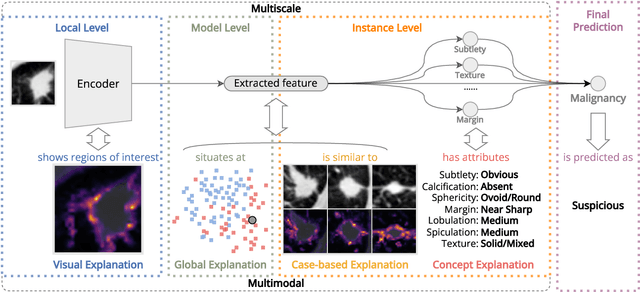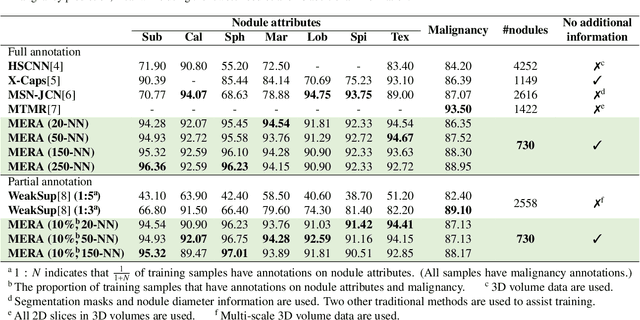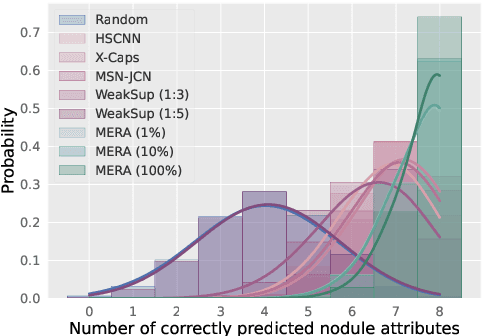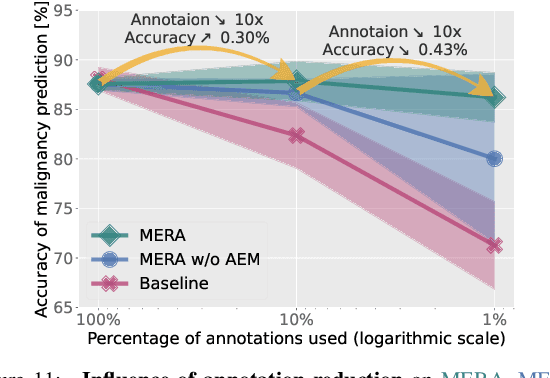Jiahao Lu
Frequency Regularization: Unveiling the Spectral Inductive Bias of Deep Neural Networks
Dec 20, 2025Abstract:Regularization techniques such as L2 regularization (Weight Decay) and Dropout are fundamental to training deep neural networks, yet their underlying physical mechanisms regarding feature frequency selection remain poorly understood. In this work, we investigate the Spectral Bias of modern Convolutional Neural Networks (CNNs). We introduce a Visual Diagnostic Framework to track the dynamic evolution of weight frequencies during training and propose a novel metric, the Spectral Suppression Ratio (SSR), to quantify the "low-pass filtering" intensity of different regularizers. By addressing the aliasing issue in small kernels (e.g., 3x3) through discrete radial profiling, our empirical results on ResNet-18 and CIFAR-10 demonstrate that L2 regularization suppresses high-frequency energy accumulation by over 3x compared to unregularized baselines. Furthermore, we reveal a critical Accuracy-Robustness Trade-off: while L2 models are sensitive to broadband Gaussian noise due to over-specialization in low frequencies, they exhibit superior robustness against high-frequency information loss (e.g., low resolution), outperforming baselines by >6% in blurred scenarios. This work provides a signal-processing perspective on generalization, confirming that regularization enforces a strong spectral inductive bias towards low-frequency structures.
TrackingWorld: World-centric Monocular 3D Tracking of Almost All Pixels
Dec 09, 2025Abstract:Monocular 3D tracking aims to capture the long-term motion of pixels in 3D space from a single monocular video and has witnessed rapid progress in recent years. However, we argue that the existing monocular 3D tracking methods still fall short in separating the camera motion from foreground dynamic motion and cannot densely track newly emerging dynamic subjects in the videos. To address these two limitations, we propose TrackingWorld, a novel pipeline for dense 3D tracking of almost all pixels within a world-centric 3D coordinate system. First, we introduce a tracking upsampler that efficiently lifts the arbitrary sparse 2D tracks into dense 2D tracks. Then, to generalize the current tracking methods to newly emerging objects, we apply the upsampler to all frames and reduce the redundancy of 2D tracks by eliminating the tracks in overlapped regions. Finally, we present an efficient optimization-based framework to back-project dense 2D tracks into world-centric 3D trajectories by estimating the camera poses and the 3D coordinates of these 2D tracks. Extensive evaluations on both synthetic and real-world datasets demonstrate that our system achieves accurate and dense 3D tracking in a world-centric coordinate frame.
MeshSplat: Generalizable Sparse-View Surface Reconstruction via Gaussian Splatting
Aug 25, 2025Abstract:Surface reconstruction has been widely studied in computer vision and graphics. However, existing surface reconstruction works struggle to recover accurate scene geometry when the input views are extremely sparse. To address this issue, we propose MeshSplat, a generalizable sparse-view surface reconstruction framework via Gaussian Splatting. Our key idea is to leverage 2DGS as a bridge, which connects novel view synthesis to learned geometric priors and then transfers these priors to achieve surface reconstruction. Specifically, we incorporate a feed-forward network to predict per-view pixel-aligned 2DGS, which enables the network to synthesize novel view images and thus eliminates the need for direct 3D ground-truth supervision. To improve the accuracy of 2DGS position and orientation prediction, we propose a Weighted Chamfer Distance Loss to regularize the depth maps, especially in overlapping areas of input views, and also a normal prediction network to align the orientation of 2DGS with normal vectors predicted by a monocular normal estimator. Extensive experiments validate the effectiveness of our proposed improvement, demonstrating that our method achieves state-of-the-art performance in generalizable sparse-view mesh reconstruction tasks. Project Page: https://hanzhichang.github.io/meshsplat_web
Reconstructing 4D Spatial Intelligence: A Survey
Jul 28, 2025



Abstract:Reconstructing 4D spatial intelligence from visual observations has long been a central yet challenging task in computer vision, with broad real-world applications. These range from entertainment domains like movies, where the focus is often on reconstructing fundamental visual elements, to embodied AI, which emphasizes interaction modeling and physical realism. Fueled by rapid advances in 3D representations and deep learning architectures, the field has evolved quickly, outpacing the scope of previous surveys. Additionally, existing surveys rarely offer a comprehensive analysis of the hierarchical structure of 4D scene reconstruction. To address this gap, we present a new perspective that organizes existing methods into five progressive levels of 4D spatial intelligence: (1) Level 1 -- reconstruction of low-level 3D attributes (e.g., depth, pose, and point maps); (2) Level 2 -- reconstruction of 3D scene components (e.g., objects, humans, structures); (3) Level 3 -- reconstruction of 4D dynamic scenes; (4) Level 4 -- modeling of interactions among scene components; and (5) Level 5 -- incorporation of physical laws and constraints. We conclude the survey by discussing the key challenges at each level and highlighting promising directions for advancing toward even richer levels of 4D spatial intelligence. To track ongoing developments, we maintain an up-to-date project page: https://github.com/yukangcao/Awesome-4D-Spatial-Intelligence.
Reasoning LLMs are Wandering Solution Explorers
May 26, 2025Abstract:Large Language Models (LLMs) have demonstrated impressive reasoning abilities through test-time computation (TTC) techniques such as chain-of-thought prompting and tree-based reasoning. However, we argue that current reasoning LLMs (RLLMs) lack the ability to systematically explore the solution space. This paper formalizes what constitutes systematic problem solving and identifies common failure modes that reveal reasoning LLMs to be wanderers rather than systematic explorers. Through qualitative and quantitative analysis across multiple state-of-the-art LLMs, we uncover persistent issues: invalid reasoning steps, redundant explorations, hallucinated or unfaithful conclusions, and so on. Our findings suggest that current models' performance can appear to be competent on simple tasks yet degrade sharply as complexity increases. Based on the findings, we advocate for new metrics and tools that evaluate not just final outputs but the structure of the reasoning process itself.
MERA: Multimodal and Multiscale Self-Explanatory Model with Considerably Reduced Annotation for Lung Nodule Diagnosis
Apr 27, 2025



Abstract:Lung cancer, a leading cause of cancer-related deaths globally, emphasises the importance of early detection for better patient outcomes. Pulmonary nodules, often early indicators of lung cancer, necessitate accurate, timely diagnosis. Despite Explainable Artificial Intelligence (XAI) advances, many existing systems struggle providing clear, comprehensive explanations, especially with limited labelled data. This study introduces MERA, a Multimodal and Multiscale self-Explanatory model designed for lung nodule diagnosis with considerably Reduced Annotation requirements. MERA integrates unsupervised and weakly supervised learning strategies (self-supervised learning techniques and Vision Transformer architecture for unsupervised feature extraction) and a hierarchical prediction mechanism leveraging sparse annotations via semi-supervised active learning in the learned latent space. MERA explains its decisions on multiple levels: model-level global explanations via semantic latent space clustering, instance-level case-based explanations showing similar instances, local visual explanations via attention maps, and concept explanations using critical nodule attributes. Evaluations on the public LIDC dataset show MERA's superior diagnostic accuracy and self-explainability. With only 1% annotated samples, MERA achieves diagnostic accuracy comparable to or exceeding state-of-the-art methods requiring full annotation. The model's inherent design delivers comprehensive, robust, multilevel explanations aligned closely with clinical practice, enhancing trustworthiness and transparency. Demonstrated viability of unsupervised and weakly supervised learning lowers the barrier to deploying diagnostic AI in broader medical domains. Our complete code is open-source available: https://github.com/diku-dk/credanno.
SAS: Segment Any 3D Scene with Integrated 2D Priors
Mar 11, 2025



Abstract:The open vocabulary capability of 3D models is increasingly valued, as traditional methods with models trained with fixed categories fail to recognize unseen objects in complex dynamic 3D scenes. In this paper, we propose a simple yet effective approach, SAS, to integrate the open vocabulary capability of multiple 2D models and migrate it to 3D domain. Specifically, we first propose Model Alignment via Text to map different 2D models into the same embedding space using text as a bridge. Then, we propose Annotation-Free Model Capability Construction to explicitly quantify the 2D model's capability of recognizing different categories using diffusion models. Following this, point cloud features from different 2D models are fused with the guide of constructed model capabilities. Finally, the integrated 2D open vocabulary capability is transferred to 3D domain through feature distillation. SAS outperforms previous methods by a large margin across multiple datasets, including ScanNet v2, Matterport3D, and nuScenes, while its generalizability is further validated on downstream tasks, e.g., gaussian segmentation and instance segmentation.
Beyond the Final Layer: Hierarchical Query Fusion Transformer with Agent-Interpolation Initialization for 3D Instance Segmentation
Feb 06, 2025



Abstract:3D instance segmentation aims to predict a set of object instances in a scene and represent them as binary foreground masks with corresponding semantic labels. Currently, transformer-based methods are gaining increasing attention due to their elegant pipelines, reduced manual selection of geometric properties, and superior performance. However, transformer-based methods fail to simultaneously maintain strong position and content information during query initialization. Additionally, due to supervision at each decoder layer, there exists a phenomenon of object disappearance with the deepening of layers. To overcome these hurdles, we introduce Beyond the Final Layer: Hierarchical Query Fusion Transformer with Agent-Interpolation Initialization for 3D Instance Segmentation (BFL). Specifically, an Agent-Interpolation Initialization Module is designed to generate resilient queries capable of achieving a balance between foreground coverage and content learning. Additionally, a Hierarchical Query Fusion Decoder is designed to retain low overlap queries, mitigating the decrease in recall with the deepening of layers. Extensive experiments on ScanNetV2, ScanNet200, ScanNet++ and S3DIS datasets demonstrate the superior performance of BFL.
Diffusion as Shader: 3D-aware Video Diffusion for Versatile Video Generation Control
Jan 07, 2025



Abstract:Diffusion models have demonstrated impressive performance in generating high-quality videos from text prompts or images. However, precise control over the video generation process, such as camera manipulation or content editing, remains a significant challenge. Existing methods for controlled video generation are typically limited to a single control type, lacking the flexibility to handle diverse control demands. In this paper, we introduce Diffusion as Shader (DaS), a novel approach that supports multiple video control tasks within a unified architecture. Our key insight is that achieving versatile video control necessitates leveraging 3D control signals, as videos are fundamentally 2D renderings of dynamic 3D content. Unlike prior methods limited to 2D control signals, DaS leverages 3D tracking videos as control inputs, making the video diffusion process inherently 3D-aware. This innovation allows DaS to achieve a wide range of video controls by simply manipulating the 3D tracking videos. A further advantage of using 3D tracking videos is their ability to effectively link frames, significantly enhancing the temporal consistency of the generated videos. With just 3 days of fine-tuning on 8 H800 GPUs using less than 10k videos, DaS demonstrates strong control capabilities across diverse tasks, including mesh-to-video generation, camera control, motion transfer, and object manipulation.
MEMO: Memory-Guided Diffusion for Expressive Talking Video Generation
Dec 05, 2024



Abstract:Recent advances in video diffusion models have unlocked new potential for realistic audio-driven talking video generation. However, achieving seamless audio-lip synchronization, maintaining long-term identity consistency, and producing natural, audio-aligned expressions in generated talking videos remain significant challenges. To address these challenges, we propose Memory-guided EMOtion-aware diffusion (MEMO), an end-to-end audio-driven portrait animation approach to generate identity-consistent and expressive talking videos. Our approach is built around two key modules: (1) a memory-guided temporal module, which enhances long-term identity consistency and motion smoothness by developing memory states to store information from a longer past context to guide temporal modeling via linear attention; and (2) an emotion-aware audio module, which replaces traditional cross attention with multi-modal attention to enhance audio-video interaction, while detecting emotions from audio to refine facial expressions via emotion adaptive layer norm. Extensive quantitative and qualitative results demonstrate that MEMO generates more realistic talking videos across diverse image and audio types, outperforming state-of-the-art methods in overall quality, audio-lip synchronization, identity consistency, and expression-emotion alignment.
 Add to Chrome
Add to Chrome Add to Firefox
Add to Firefox Add to Edge
Add to Edge